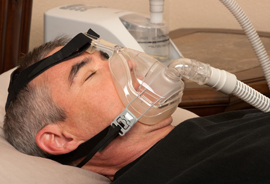
In researches such as this, accurate documentation via quality medical transcription is indispensable for sleep study experts who are usually psychiatrists. The detailed report of this study was published online in the Journal of Clinical Endocrinology and Metabolism (April 15, 2014 edition). Researchers observed the health records of about 1,377 people in Taiwan (diagnosed with obstructive sleep apnea) and 20,655 people (diagnosed without the sleep disorder) between the years 2000 and 2008 to analyze the total number of people who developed the weakened bone condition osteoporosis.
The study found the incidence of osteoporosis was 2.7 times higher among patients with sleep apnea than their counterparts without sleep apnea (even after making adjustments for age, gender, coronary artery disease, blood pressure, diabetes, chronic kidney disease, hyperlipidemia, monthly income, and geographical location). Even though the study results reveal that the risk of osteoporosis is more among patients with sleep apnea, it doesn’t necessarily signify that there is a direct cause and effect relation between sleep apnea and the bone condition.
With the number of people being diagnosed with obstructive sleep apnea (OSA) increasing worldwide, it is essential for both healthcare providers and patients to gather adequate information about the risks of developing other related conditions. More information about sleep apnea and bone health must be gathered so as to create effective strategies to prevent osteoporosis.
The research is distinguished in being a population-based study of a large, nationally representative sample. Moreover, patients chosen for the study were those who had received dual-energy X-ray absorptiometry before being diagnosed with osteoporosis and a polysomnography study before being diagnosed with OSA. However, like any new study, this research also has its limitations which the researchers acknowledge. They point to the fact that it is unknown how OSA actually affects the bone metabolism and physicians treating patients with OSA need to be aware of the connection between OSA and bone metabolism.

